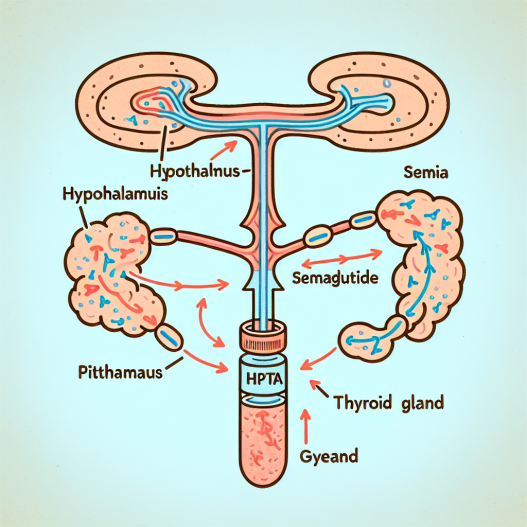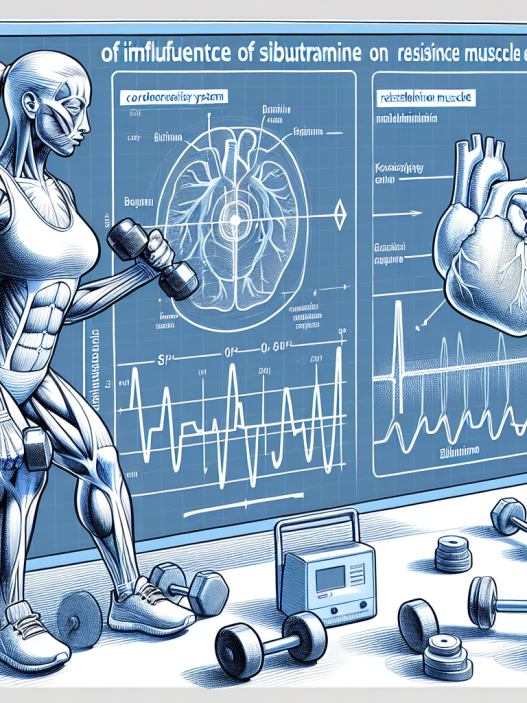-
Table of Contents
«Revolutionize your HPTA balance with Semaglutide – the game-changing treatment for hormonal health.»
Introduction
Semaglutide es un medicamento que se utiliza para tratar la diabetes tipo 2. Sin embargo, también puede tener un impacto en el eje HPTA, que es el sistema que regula la producción de hormonas en el cuerpo. En este artículo, exploraremos cómo el semaglutide afecta al eje HPTA y qué implicaciones puede tener para la salud.
The Impact of Semaglutide on the HPTA Axis: Understanding the Mechanism of Action
Semaglutide is a medication that has gained popularity in recent years for its effectiveness in treating type 2 diabetes. However, as with any medication, it is important to understand how it works and its potential impact on the body. One area of concern is its effect on the HPTA axis, which plays a crucial role in regulating hormone levels in the body.
The HPTA axis, also known as the hypothalamic-pituitary-thyroid-adrenal axis, is a complex system that involves the hypothalamus, pituitary gland, thyroid gland, and adrenal glands. These glands work together to regulate the production and release of hormones such as thyroid hormones, cortisol, and sex hormones. Any disruption in this axis can lead to various health issues, including metabolic disorders, infertility, and mood disorders.
Semaglutide belongs to a class of medications called glucagon-like peptide-1 (GLP-1) receptor agonists. These medications work by mimicking the action of GLP-1, a hormone that is naturally produced in the body to regulate blood sugar levels. GLP-1 also has an impact on the HPTA axis, and therefore, it is important to understand how semaglutide affects this axis.
One of the main concerns regarding semaglutide and the HPTA axis is its potential to suppress the production of thyroid-stimulating hormone (TSH). TSH is produced by the pituitary gland and stimulates the thyroid gland to produce thyroid hormones. These hormones play a crucial role in regulating metabolism, growth, and development. Studies have shown that semaglutide can lead to a decrease in TSH levels, which may result in an underactive thyroid or hypothyroidism.
However, it is important to note that the decrease in TSH levels is usually mild and does not cause any significant changes in thyroid function. In fact, studies have shown that semaglutide does not have a direct effect on the thyroid gland itself. Instead, it works by suppressing the release of thyrotropin-releasing hormone (TRH) from the hypothalamus. TRH is a hormone that stimulates the pituitary gland to produce TSH. Therefore, the decrease in TSH levels is a result of the medication’s impact on the hypothalamus, rather than the thyroid gland.
Another concern is the potential impact of semaglutide on the adrenal glands. The adrenal glands produce cortisol, a hormone that helps the body respond to stress and regulate metabolism. Some studies have shown that semaglutide can lead to a slight increase in cortisol levels. However, this increase is not significant enough to cause any adverse effects on the body. In fact, it may even have a beneficial effect on individuals with low cortisol levels.
Furthermore, studies have also shown that semaglutide does not have a direct effect on sex hormones such as testosterone and estrogen. These hormones are crucial for reproductive health and play a role in regulating mood and energy levels. Therefore, semaglutide does not have a significant impact on the HPTA axis in terms of sex hormone production.
In conclusion, semaglutide does have an impact on the HPTA axis, but it is usually mild and does not cause any significant changes in hormone levels. The decrease in TSH levels is a result of the medication’s effect on the hypothalamus, rather than the thyroid gland itself. The slight increase in cortisol levels is not significant enough to cause any adverse effects, and semaglutide does not have a direct impact on sex hormone production. However, it is important for individuals taking semaglutide to monitor their hormone levels and consult with their healthcare provider if they experience any concerning symptoms. Overall, understanding the mechanism of action of semaglutide can help individuals make informed decisions about their treatment and manage any potential side effects.
Potential Side Effects of Semaglutide on the HPTA Axis and How to Manage Them
Semaglutide is a medication that has gained popularity in recent years for its effectiveness in managing type 2 diabetes. It belongs to a class of drugs called GLP-1 receptor agonists, which work by mimicking the effects of a hormone called glucagon-like peptide-1 (GLP-1) in the body. This hormone helps regulate blood sugar levels and also has other beneficial effects such as promoting weight loss and reducing appetite.
While semaglutide has shown great promise in treating diabetes, it is important to be aware of its potential side effects. One area of concern is its impact on the hypothalamic-pituitary-thyroid-adrenal (HPTA) axis, which is a complex system of glands and hormones that regulate various bodily functions. In this article, we will explore how semaglutide affects the HPTA axis and what steps can be taken to manage any potential side effects.
Firstly, it is important to understand how the HPTA axis works. The hypothalamus, a small region in the brain, releases a hormone called thyrotropin-releasing hormone (TRH) which stimulates the pituitary gland to release thyroid-stimulating hormone (TSH). TSH then acts on the thyroid gland to produce thyroid hormones, which are essential for regulating metabolism and energy levels in the body. The HPTA axis also plays a role in the production of cortisol, a hormone that helps the body respond to stress.
One of the potential side effects of semaglutide on the HPTA axis is a decrease in thyroid function. Studies have shown that GLP-1 receptor agonists can suppress TSH levels, leading to a decrease in thyroid hormone production. This can result in symptoms such as fatigue, weight gain, and cold intolerance. In some cases, it may even lead to hypothyroidism, a condition where the thyroid gland does not produce enough hormones.
Another potential side effect of semaglutide on the HPTA axis is an increase in cortisol levels. This is because GLP-1 receptor agonists can stimulate the release of cortisol from the adrenal glands. While cortisol is an important hormone for managing stress, high levels of it can have negative effects on the body, such as weight gain, high blood pressure, and increased risk of heart disease.
So, how can these potential side effects be managed? The first step is to monitor thyroid function regularly while taking semaglutide. This can be done through blood tests to check TSH and thyroid hormone levels. If there is a decrease in thyroid function, your doctor may adjust your medication dosage or prescribe thyroid hormone replacement therapy.
To manage the potential increase in cortisol levels, it is important to maintain a healthy lifestyle. This includes getting enough sleep, exercising regularly, and managing stress levels. It may also be helpful to incorporate relaxation techniques such as meditation or yoga into your daily routine.
In addition to these lifestyle changes, your doctor may also prescribe medications to help regulate cortisol levels. These may include beta-blockers or medications that block the production of cortisol in the adrenal glands.
It is also important to note that the potential side effects on the HPTA axis may vary from person to person. Some individuals may experience no changes in thyroid or cortisol levels while taking semaglutide, while others may experience significant changes. It is crucial to communicate any symptoms or concerns with your doctor so that they can monitor and manage any potential side effects.
In conclusion, while semaglutide has shown great promise in managing type 2 diabetes, it is important to be aware of its potential side effects on the HPTA axis. Regular monitoring of thyroid function and managing stress levels can help mitigate any potential changes in thyroid and cortisol levels. As with any medication, it is important to discuss any concerns with your doctor and work together to find the best treatment plan for you.
The Role of Semaglutide in HPTA Dysfunction and Its Implications for Diabetes Management
Semaglutide is a medication that has gained popularity in recent years for its effectiveness in managing type 2 diabetes. It belongs to a class of drugs called GLP-1 receptor agonists, which work by mimicking the effects of a hormone called glucagon-like peptide-1 (GLP-1) in the body. GLP-1 is responsible for stimulating insulin production and reducing the production of glucose in the liver, making it an important hormone in regulating blood sugar levels.
However, as with any medication, there are potential side effects that need to be considered. One of the concerns surrounding the use of semaglutide is its impact on the hypothalamic-pituitary-testicular axis (HPTA). This axis is responsible for regulating the production of hormones such as testosterone, luteinizing hormone (LH), and follicle-stimulating hormone (FSH). Any disruption to this axis can lead to hormonal imbalances and dysfunction, which can have significant implications for overall health.
Studies have shown that semaglutide can affect the HPTA in both men and women. In men, it has been found to decrease testosterone levels, which can lead to symptoms such as decreased libido, erectile dysfunction, and fatigue. This is because semaglutide can suppress the production of LH, which is responsible for stimulating the production of testosterone in the testes. In women, semaglutide has been shown to decrease levels of FSH, which can affect the menstrual cycle and fertility.
The exact mechanism by which semaglutide affects the HPTA is not fully understood. However, it is believed that the drug may interfere with the communication between the hypothalamus, pituitary gland, and testes/ovaries, leading to a disruption in hormone production. This disruption can have a cascading effect on other hormones in the body, leading to further complications.
One of the major concerns with HPTA dysfunction is its impact on diabetes management. Testosterone plays a crucial role in regulating blood sugar levels, and a decrease in its levels can lead to insulin resistance and poor glycemic control. This can make it more challenging to manage diabetes and increase the risk of complications such as cardiovascular disease and nerve damage.
Furthermore, HPTA dysfunction can also have a negative impact on bone health. Testosterone is essential for maintaining bone density, and a decrease in its levels can increase the risk of osteoporosis and fractures. This is a significant concern for individuals with diabetes, as they are already at a higher risk of bone-related complications.
So, what does this mean for individuals with diabetes who are taking semaglutide? Firstly, it is essential to monitor hormone levels regularly, especially in men. If testosterone levels are found to be low, testosterone replacement therapy may be necessary to alleviate symptoms and improve diabetes management. In women, monitoring FSH levels can help identify any potential issues with fertility and menstrual cycle irregularities.
It is also crucial for healthcare providers to consider the potential impact of semaglutide on the HPTA when prescribing the medication. This is especially important for individuals who are already at risk of HPTA dysfunction, such as those with a history of hormonal imbalances or fertility issues.
In conclusion, while semaglutide has proven to be an effective medication for managing type 2 diabetes, its impact on the HPTA cannot be ignored. It is essential for individuals with diabetes and their healthcare providers to be aware of the potential side effects and take necessary precautions to monitor and manage any HPTA dysfunction. By doing so, we can ensure that the benefits of semaglutide outweigh any potential risks and continue to improve diabetes management for those who need it.
Q&A
1) ¿Qué es Semaglutid y cómo afecta al eje HPTA?
Semaglutid es un medicamento utilizado para tratar la diabetes tipo 2. Actúa como un agonista del receptor de GLP-1, lo que significa que estimula la producción de insulina y reduce la producción de glucagón en el páncreas. Esto puede afectar al eje HPTA (hipotálamo-hipófisis-testículo) al regular la producción de hormonas sexuales y la función testicular.
2) ¿Puede Semaglutid causar disfunción eréctil?
No hay evidencia de que Semaglutid cause directamente disfunción eréctil. Sin embargo, al afectar al eje HPTA, puede tener un impacto en la producción de testosterona y, en algunos casos, puede causar disfunción eréctil como efecto secundario.
3) ¿Cómo se debe monitorear el eje HPTA en pacientes que toman Semaglutid?
Es importante que los pacientes que toman Semaglutid sean monitoreados regularmente por su médico para evaluar la función del eje HPTA. Esto puede incluir pruebas de sangre para medir los niveles de hormonas sexuales y la función testicular. Si hay algún cambio significativo, se pueden tomar medidas para ajustar la dosis o cambiar el tratamiento.











